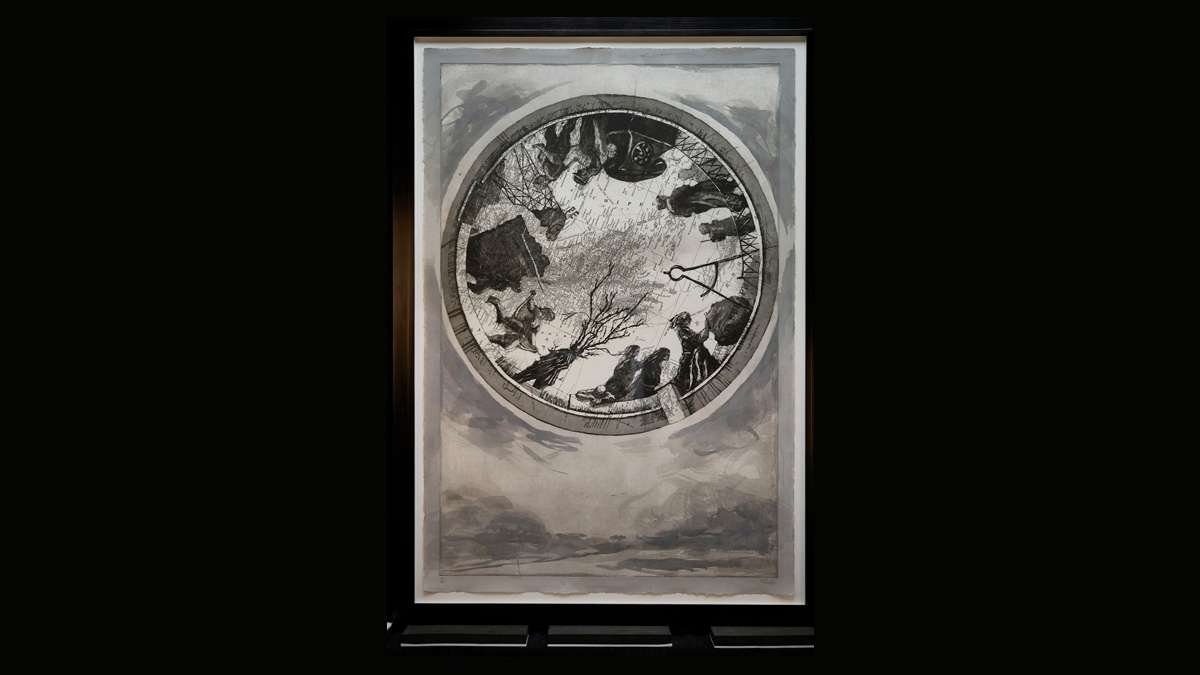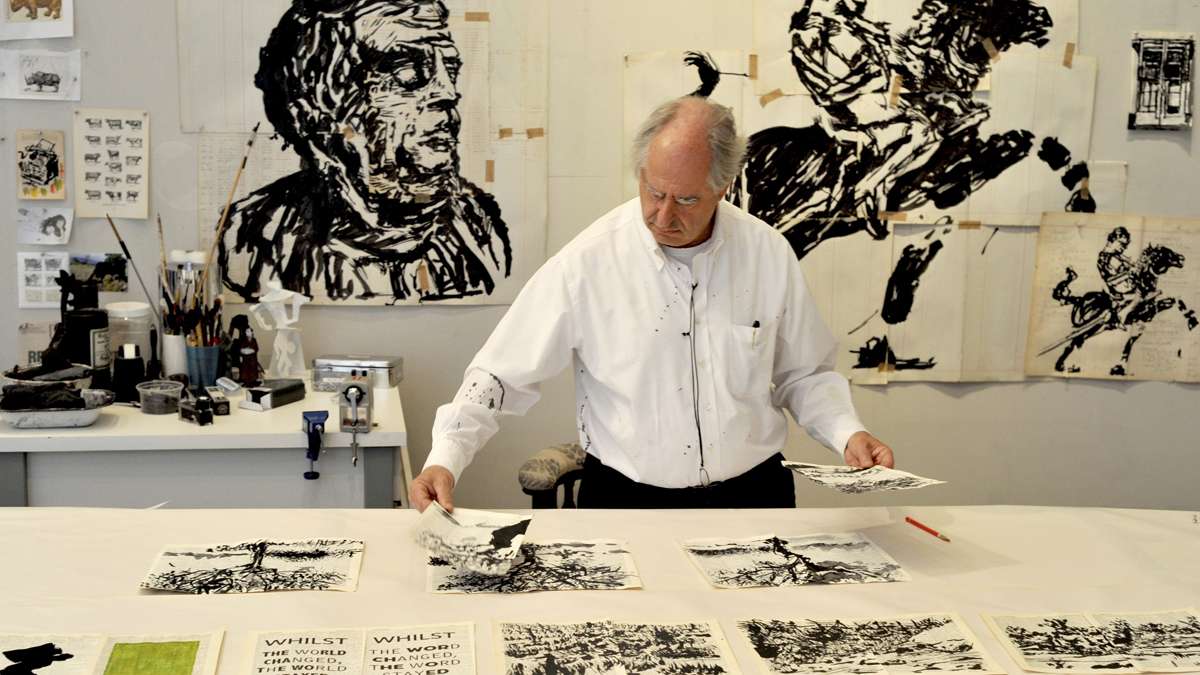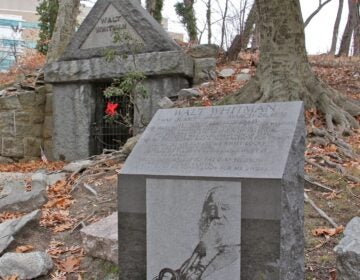South African artist William Kentridge to give Oct 14 lecture at Princeton University
As the 2015–16 Belknap Visitor in the Humanities, multimedia artist William Kentridge is among the luminaries coming to inspire students at Princeton University. (Past Belknap Visitors have included Toni Morrison, Eudora Welty, Isaac Bashevis Singer, Nadine Gordimer, Roy Lichtenstein, Athol Fugard, Doris Lessing, John Updike, Edward Albee, Czeslaw Milosz, Carlos Fuentes and Roz Chast.)
When: Oct 14, 2015 at 5 p.m.Where: Princeton University, McCosh Hall, room 10
Considering all he’s accomplished, it’s hard to believe Kentridge was born as recently as 1955. The Johannesburg, South Africa, native works in such media as drawing, printmaking, film, sculpture, theater and opera, addressing issues of colonialism, globalization, the Enlightenment, modern Russian history and the nature of time and memory. Exhibited around the world, he has also directed opera productions at the Metropolitan Opera in New York; La Scala, Milan; and Théatre de la Monnaie, Brussels. His production of Alban Berg’s Lulu will open at the Metropolitan Opera in November, and his multimedia chamber opera Refuse the Hour is part of BAM’s 2015 Next Wave Festival.
Belknap Visitors spend an intensive day on campus, and as such, Kentridge will give a public lecture October 14. In honor of this, the Princeton University Art Museum has placed two of his works on view through January 3: “Atlas Procession I” (2000), an etching, aquatint, drypoint, and letterpress which features a sequence of calligraphic figures and marks in the round, and “Typewriter IV” (2011), a collage of ink on found pages.
“One of the most powerful and original artists of the last 40 years, William Kentridge has addressed some of the most complex issues of our time, often using drawing — and the act of making, effacing, and remaking — as both means and metaphor for expression,” says PUAM Director James Steward.
Kentridge’s lecture, “O Sentimental Machine,” is based on his multichannel audio and video installation – on view at the Istanbul Biennial — that explores the distant experience of participating in social events. The work, installed on Büyükada Island, was conceived as a response to the history of Leon Trotsky’s exile in Istanbul from 1929 to 1933, when he resided in a mansion on the island. Mimicking Trotsky dictating messages to his secretary and sending them off into the world, Kentridge represents Trotsky’s idea of the human as a sentimental but programmable machine. The lecture is at 5 p.m. in McCosh 10 on the Princeton University campus, and a reception, also open to the public, will follow at the Princeton University Art Museum.
Kentridge first gained acclaim in the 1990s for distinctive stop-motion animations, using torn cardboard and charcoal drawings, which often reflected his experiences in South Africa during apartheid and its aftermath.
Growing up as the son of attorneys who represented people marginalized by apartheid, he studied politics in Johannesburg and then went to Paris to study mime and theater, hoping to become an actor. In Johannesburg he acted and directed on stage and for television. At the same time, he was making prints and drawings, with the belief that the hand should lead the brain.
It was a natural progression to combine filmmaking and drawing into animation. Using a 16-mm Bolex camera, he filmed his charcoal drawings and paper collages over time, recording scenes as they evolve. Working without a script or storyboard, he plotted out each animated film, preserving every addition and erasure. For a sequence that would take hundreds of computer-drawn cels, Kentridge used a single charcoal drawing, altered and rephotographed again and again.
The animated films deal with political and social themes from an autobiographical point of view — he includes his own image in many works. He creates optical illusions using stereoscopic viewers.
“Kentridge’s work directly addresses questions of spectatorship, surveillance, witnessing and catharsis,” writes Susan Stewart, Professor in the Humanities at Princeton who will introduce Kentridge for the public talk. Stewart is one of the authors of a monograph on Kentridge’s work: “William Kentridge Prints.” “By choosing to be a genuinely universal artist,” continues Stewart, “he has been able to be a genuinely local artist, one who thinks about the private apprehension of public trauma and reminds the public to acknowledge the resources of the private as well.”
Here’s how Calvin Tompkins describes a Kentridge film in The New Yorker: “An eight-minute sequence of hand-drawn animations, it included a heavyset businessman in a dark chalk-striped suit, sitting at a desk piled with papers; a dozen or more people manning a huge switchboard, from which swiftly moving cobalt-blue lines proliferated and intersected; individual men and women being pushed aside and obscured by pages of meaningless numbers; a dense crowd of people surging through city streets; men kicking or beating helpless victims. The businessman reappeared toward the end, holding his head in apparent anguish; the word “GIVE,” in large capitals, filled the screen and changed to “FORGIVE”; the businessman stood, looking down, as blue water poured from the pockets of his clothes, filling the room. The images were crudely but powerfully drawn, in charcoal and blue pastel, and filmed in an old-fashioned stop-motion technique.”
______________________________________________________
The Artful Blogger is written by Ilene Dube and offers a look inside the art world of the greater Princeton area. Ilene Dube is an award-winning arts writer and editor, as well as an artist, curator and activist for the arts.
WHYY is your source for fact-based, in-depth journalism and information. As a nonprofit organization, we rely on financial support from readers like you. Please give today.








